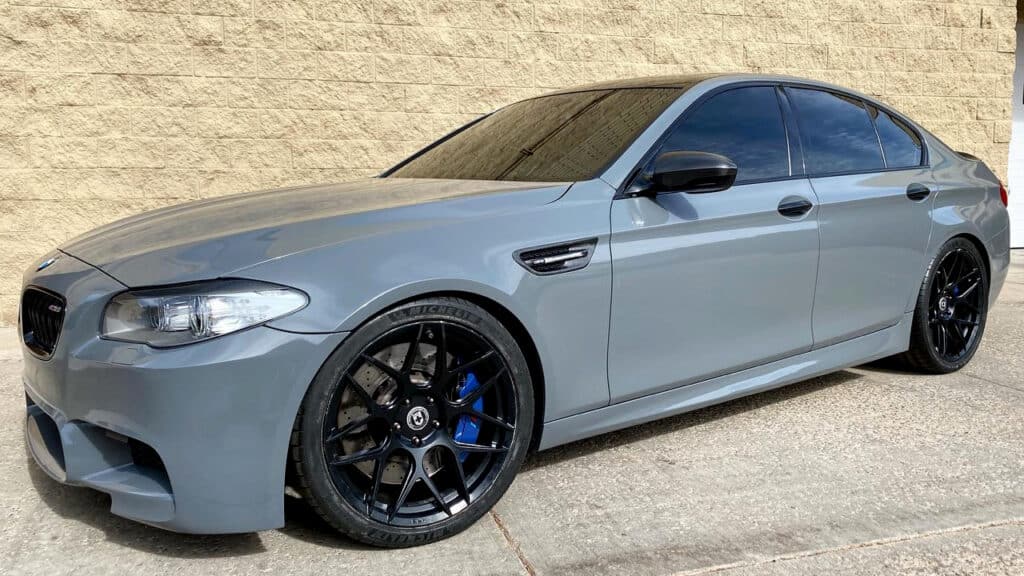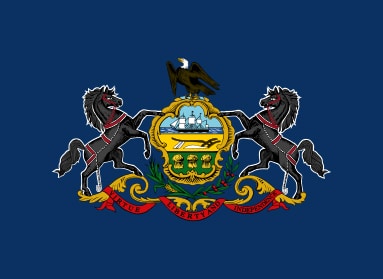If you want to get your car windows tinted in Pennsylvania, you’re going to have to follow the state’s laws around this matter.
Every U.S. state has its own laws when it comes to the use of dark window tints. This is mainly done so that law enforcement officials can identify the occupants of every vehicle on the street.
That, along with the fact that excessively dark tints make for dangerous driving conditions.
Window tint laws in Pennsylvania are strict. We’ll discuss the details in this guide, along with more relevant information.
Is Window Tint Legal In Pennsylvania

Window tint is legal in Pennsylvania, but there are specific requirements that you need to know about. This has to do with how dark the tint is, how much light it reflects, and which window it is adhered to.
Tint laws were enacted in Pennsylvania in 1999 and they’ve been in effect ever since. It’s important to understand that not following them means you might get pulled over. And while you’re waiting, your vehicle may be searched too.
At the very least, this is a massive inconvenience that can be easily avoided if you know how dark and reflective your window tint is allowed to be according to the laws in the state. That’s what we will take a look at.
Permitted Window Tint Darkness

The darkness of your window tint film is measured with the help of a unit called visible light transmission or VLT.
As you can probably gather from its context, this is a unit of measure that tells you how much light can pass through the tinted film of your car’s windows.
It is denoted in percentages. That makes it very easy to verify if you are on the right side of johnny law.
These specifications vary based on the vehicle in question, how many windows it has, and which window it is that you intend on getting tinted.
They are also different for different classes of vehicles in Pennsylvania, like in many other states.
Sedans
- Windshield: More than 70% VLT, but darkness is permitted on 3″ at the top
- Driver-side windows: Over 70% VLT
- Passenger-side windows: Over 70% VLT
- Rear window: Over 70% VLT
SUVs and Vans

- Windshield: More than 70% VLT, but darkness is permitted on 3″ at the top
- Driver side windows: Over 70% VLT
- Passenger side windows: No limits on tint darkness
- Rear window: No limits on tint darkness
Acceptable Tint Reflection
Tint reflection is different from tint darkness. While darkness tells you the amount of light that can pass through the film, reflection tells you how much of it is allowed to bounce off the surface of the film on the outside.
People install reflective tint films because it does a fantastic job at reducing the glare and heat inside the car because of sunlight.
Unfortunately, the state of Pennsylvania does not permit reflective window tint film.
Other Tint Rules to Memorize

Those were the basics. There are a few other details you should be familiar with if you’re going to get tinted windows in Pennsylvania. Here’s what they are.
- You don’t need to worry about the color of the tint in Pennsylvania because there is no ban on any color.
- If your back window is tinted, you need to have dual side mirrors on your car.
- Makers of these tint films don’t need to give you a certificate stating they comply with the laws. So you must do your due diligence.
- But they need to put a sticker on the tint which tells you its specs like manufacturer, their registration number, and a label saying “complies with VESC-20”.
- The state also has medical exceptions, but you need a doctor’s certificate to be exempted.
- Official law enforcement vehicles, government vehicles and ambulances are also exempt from these rules.
State of Pennsylvania Info

The state of Pennsylvania is in the mid-Atlantic region of the US, with Delaware, Maryland, West Virginia and Ohio surrounding it.
In terms of population, it is 6th on the list. Philadelphia and Pittsburgh are two of its most populous cities.
Population: 12,763,536
Capital: Harrisburg
Registered vehicles: 9,990,941
Total lane miles: 251,708
Number of highways: 23
Tint law references: Pennsylvania Window Tint Fact Sheet
Medical exemption info: Pennsylvania Code Title 75

